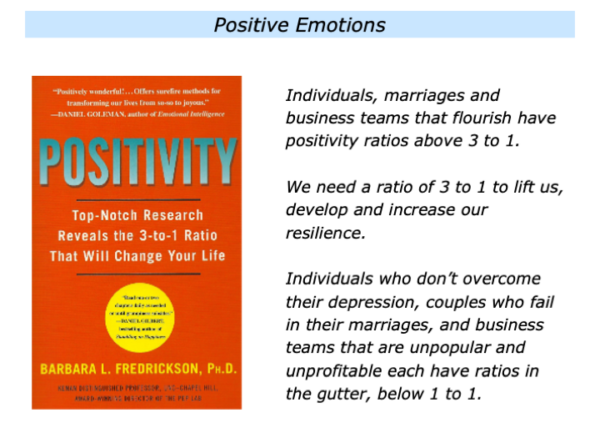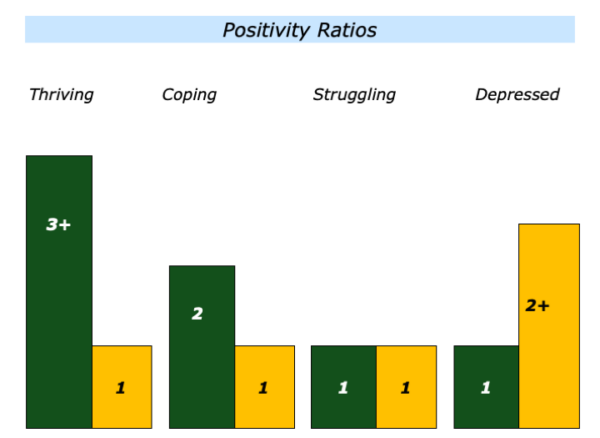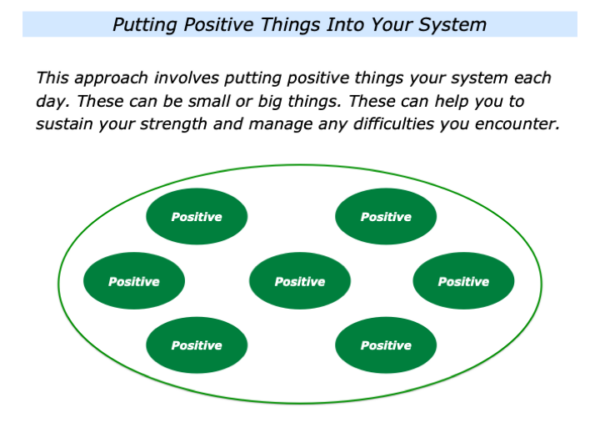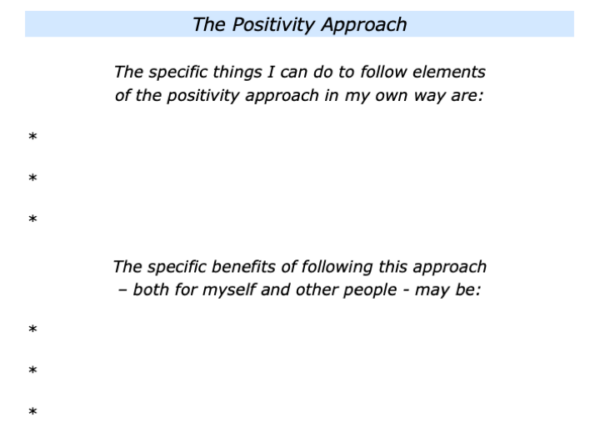
Barbara Fredrickson did pioneering work that demonstrated how positive emotions can improve our lives. Twenty years of research into emotions culminated in her book Positivity.
The book was based on solid research but it also captured the imagination. Why? Interviewers and readers focused on a key theme that provided a signpost to the future.
People who have positive emotions in a ratio of 3:1 in relation to negative emotions are more likely to flourish.
Barbara saw this pattern repeated in marriages and teams that thrived. People who experienced more negativity were more likely to have difficulties.

Barbara explains that positivity is more than simply being happy. It certainly isn’t putting on a smiling face to grin and bear things.
Positivity is based on being true to ourselves. It embodies gratitude, love, playfulness, curiosity and adventure. These emotions trigger each other and create an upward spiral. They ‘broaden and build’, helping us to make breakthroughs and bring new things into being.
Such emotions provide the basis for creativity, problem solving and even evolution. They enable us to open our hearts and minds. Negativity, on the other hand, closes down our ability to think, create and grow. Barbara explains this in the following way.
Positivity consists of the whole range of positive emotions – from appreciation to love, from amusement to joy, from hope to gratitude, and then some.
The term is purposely broad. It includes the positive meanings and optimistic attitudes that trigger positive emotions as well as the open minds, tender hearts, relaxed limbs, and soft faces they usher in.
It even includes the long-term impact that positive emotions have on your character, relationships, communities and environments.
And the new scientific discoveries about the importance of positivity are stunning.
Barbara discovered that people could improve their wellbeing by improving their positivity ratio. She likened this to changing their diet to eat healthier food. They needed maintain this positive diet, however, rather than keep exposing themselves to negativity.
She listed ten forms of positivity that can nourish the soul. People can do both simple and big things that generate the following emotions in themselves and other people.
Gratitude … Joy … Love … Hope … Inspiration … Amusement … Awe … Interest … Pride … Serenity.
People who maintain these habits will create an upward spiral that takes them beyond the tipping point. They are then more likely to increase the wellbeing of both themselves and other people.
Barbara’s work highlights the importance of putting positive things – rather than poisonous things – into a system. This may be their bodies, their relationships or their planet.

Let’s return to your own life and work. Imagine that you want to follow elements of the positivity approach in your own way? How can you continue to put positive things into your system?
You may want to play your favourite music, walk with your dog, cook nourishing food, do creative projects, spend time with encouraging people success, do satisfying work or do other activities. What may be the benefits of doing these things?
If you wish try tackling the exercise on this theme. This invites you to complete the following sentences.







Leave a Reply